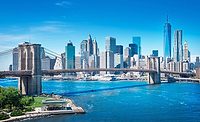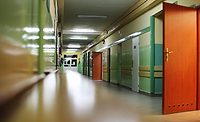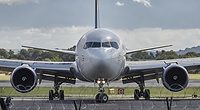Mayor de Blasio announces school air safety measures

New York Mayor Bill de Blasio and Schools Chancellor Richard Carranza announced a multi-pronged approach to addressing, monitoring, and reporting air quality and ventilation in every building by the first day of school.
Beginning August 25, every space occupied by students, teachers and staff in a school building will be inspected by a citywide team of independent professional engineers to assess each space and determine adequate ventilation. Inspection criteria and standards were developed based on a thorough review of guidance from the CDC and WHO, as well as expert review by the New York City Department of Health and Mental Hygiene. Building inspection results will be publicly shared on a rolling basis beginning this week through Friday, September 4th.
For the last several weeks, custodial engineers have been inspecting school buildings to identify repairs that will ensure proper ventilation. Now, every school building in New York City will also be inspected by teams of independent, certified professional engineers contracted by the School Construction Authority (SCA) to ensure that mechanical and natural air circulation and ventilation systems are in place prior to reopening. These School Ventilation Action Team inspections will provide a highly-qualified, third-party determination and documentation of how the building is providing air circulation and ventilation and the current status of those mechanisms. SCA will be joined by sister agencies, like the Department of Buildings and FDNY, as well as DOE custodial engineers to make sure every space inside a building is ready for occupancy.
The DOE will use the assessments to ensure sufficient ventilation by the first day of school. In instances where that is not possible, the room or building will not be used until repairs can be made.
The DOE has also purchased 10,000 portable air purifiers to be placed in schools by the first day. These devices are designed to remove particles from the air and reduce the risk of viruses being transmitted through the use of high efficiency particulate air (HEPA) filters. Schools will be allocated portable air purifiers first for their isolation rooms and nurses’ offices, and then based on need identified during building inspections as an added layer of defense against airborne particles. More will be purchased if needed.
Every building will also be provided a CO2 testing device for custodial engineers to measure the level of fresh air. When a room is occupied, elevated levels of CO2 in an enclosed space are evidence of poor air circulation and ventilation. Every Custodial Engineer is being provided with a CO2 testing device to provide quick, on-the-spot information regarding indoor air quality. School leaders and staff can request a CO2 reading to ensure that air circulation is being maintained in a room. If a room falls outside of the parameters for what is safe, the issue will be elevated to the Division of School Facilities, and the room will not be used until air circulation is remedied and improved.
Proper air ventilation is a key component of stopping the spread of COVID-19. Per CDC guidance, it is highly recommended that schools:
- Increase the amount of fresh air in classrooms – whether by natural or mechanical means,
- Inspect, repair, and increase air filtration,
- Inspect and repair supply and exhaust fans,
- Deploy portable High-Efficiency Particulate Air (HEPA) filters.
- Ensure ventilation systems operate properly and provide acceptable indoor air quality for the current occupancy level for each space.
Looking for a reprint of this article?
From high-res PDFs to custom plaques, order your copy today!





